
Dive Watches
Divers are gear fiends. They love to add more equipment to their collection, and the more novel or higher the quality the better. Expense often becomes the last priority, whereas having the latest gadget becomes everything.
The only problem with shelling out for a new double tank rig, titanium knife or self inflating SMB is that you can’t really show them off to your friends at the bar, nor will anyone who isn’t a diver give it a second look. The one savior of the proud capitalist diver is the dive watch, he can spend masses of his hard earned cash on it, he can devote hours of his precious time to pouring over the specifications of individual marine time pieces, it has potential for serious bragging rights and, most importantly, can be flashed around on the boat, at the bar or on the eighteenth hole.
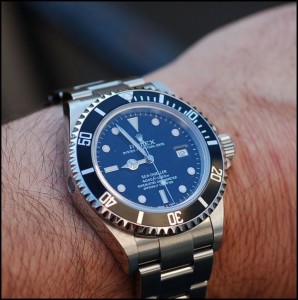
A Satisfying Display of Your Diving Credentials…While Sitting in the Bar!
I happen to fit the profile mentioned above in all aspects apart from the part about playing golf (I stink at golf), but I do love watches, dive watches in particular being as they are always so quality intensive and have so many innovative features. I have quite a number of various timepieces that I’ve accumulated along my travels. This guide is designed to educate the novice watch buyer to the gratuitous need for a diver’s wristwatch or, alternatively, to stoke the fires of passion in the hardened chronophile.
Analogue or Digital?
So, day one, hour one of your watch hunt (or virtual watch hunt for the less rich of us) you need to start making some tough decisions about your next dive gear acquisition, first off let’s decide if you want a classic timepiece that gives you an element of old school diver credibility, or do you want to go digital, which will likely have more features (some dive watches sit on the line that divides time keeping with dive computing, and some cross it completely).
I can’t say that one technology is better than the other though I can state what attributes each style is more accomplished in to help you make up your mind.
Digital
Clear – I tend to find that although I have always preferred analogue dials on my watches, digital displays are much clearer to read and more precise (especially when viewed in murky water). A digital screen requires less air volume too, which means it can have a wider viewing angle underwater. It’s also much easier to count down the seconds on a digital watch, which might aid in some time-sensitive diving practices (e.g. counting out sixty-seconds before surfacing when searching for a lost buddy).
Accurate – This is not to say that an analogue watch isn’t accurate, but digital watches, even cheap models, are unlikely to loose or gain more than thirty-seconds in a month. Some, like the Casio G-Shock, have radio time updates that keep it perfectly accurate all the time.
Cheaper – Although this isn’t always true, broadly speaking it is cheaper to choose a digital watch than an analogue equivalent (a complete role reversal from twenty-five years ago!)
More Functions – Even a basic digital watch will have a stopwatch, alarm, day/date, backlight and, obviously, tell the time. It’s quite surprising how many of these features can become useful to a diver at one stage or another of his diving career.
Analogue
Rugged – Although there are plenty of solid digital watches, a well made analogue timepiece will survive an extra level of abuse. They are also much more likely to last fifty years, whereas a digital watch might only have a useful life of ten, which makes it a poor heirloom.
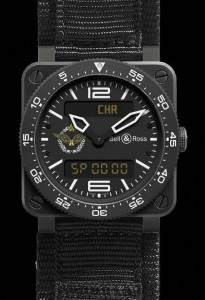
Rugged and Practical, What Mechanical Watches Were Meant to Be
Stylish – This is probably the real reason that most people will take an analogue over a digital – they just look better. It’s something about the classic style of two mechanical hands on a face versus a plastic screen that tends to put people’s cash in the direction of mechanical.
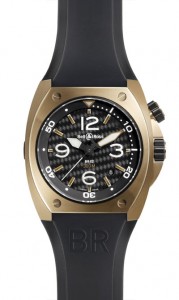
A Digital Watch Could Never Be As Chic As This
Credible – Another aspect of diver’s vanity is their lust for credibility. This is especially true when looking into the technical side of diving, there is masses of bravado and machismo floating around in the diving community which feeds a desire to prove (or suggest) a battle-won respect. One way to hint at years of diving experience is to use old school gear (and say; “they don’t make X like they used to) like “classic style” analogue watches.
Hybrid
There is a third avenue for you to go down which is the combined analogue watch with a digital display behind it. It doesn’t have the same level of credibility as a mechanical watch nor is the screen as big on the digital display, but it means you can avoid the difficult question altogether. This trend appears to be broadly fading away as nineties phenomenon.
Features
Dive watches have a few features that make them just a little more useful to a diver than simply being able to tell the time. One or all of these might just make you choose one watch over another.
Stop Watch
In a digital format a device that accurately records the time from and to a predetermined point is called a stop watch, in a mechanical device it is called a chronograph. In either case it can be useful to a diver for timing dives, measuring distance when traveling at a known speed or for settling a dispute over whose fins are faster over a hundred meters.
Compass
This is one of those features that you might find is life changing or gimmicky. I have found that a compass in a watch (or placed on a watch strap) is a useful item when broadly trying to gather your bearings (in a city with many blocks and little visual references, for instance) but for navigating underwater I find them pointless. They won’t tilt, be as accurate, or glow as brightly as my Suunto SK-7 which I stand by as the best dive compass available.
Depth Gauge
This is a fairly new development in diver’s wristwatches. To put it simply, it means that the watch is halfway between being a dive computer and a time piece but doesn’t quite have the features to replace a computer. I won’t argue that a back up of anything is a good idea, especially if you are diving off the RDP using a watch and SPG, not using a computer. But, you’ll have to excuse me for skepticism, most divers are using computers now, so the need for an additional depth gauge is pretty much redundant. The only exceptions are those dive computers that are so small that they double up as watches, in their case a depth gauge is a very necessary feature!
Gas Escape Valve
When looking at hardcore dive watches for saturation divers who spend days at great depths, you will often find a gas release valve which is designed to allow the extremely small molecules of helium, that have found their way into your watch case, to vent as the diver decompresses. If this vent did not exist then the watch face might well pop off due to the increasing pressure buildup within the case. This feature has nothing to do with normal recreational divers, it only affects those divers that use helium in their breathing mix.
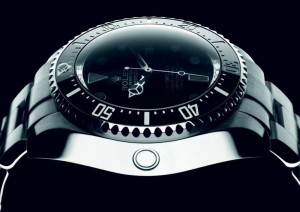
Inconspicuous But Vital, A Helium Escape Valve Makes It Viable to Take Your Watch Deep
Fluid Filled
This is one of my favorite dive watch innovations because it allows the watch to be taken down to literally any depth found in the Earth’s ocean without any pressure related problems. The layperson’s explanation is that if you fill the case with a very thin oil (it has to be thin to allow the movement to run smoothly, and it has to be oil so it doesn’t cause corrosion) then there is no air space to be compressed by the deep water, which allows it remain in equilibrium with the surrounding water. Being as there is no air space between the crystal and the dial, there is no angle at which you cannot see the watch face because the light doesn’t change medium, allowing the beam to stay straight and not refract.
Bezel
This is the rotating ring that sits on the watch, it usually has a glow in the dark mark on it and minute markings around it. This bezel is used to show a diver how long he has been diving for. You place the big mark on the minute hand (wherever it is) and then as the dive progresses you look at the bezel’s minute markers and the minute hand will point to the how long you’ve been under. Some bezels will only move in one direction, this means that if you bang your watch when you’re under you won’t add time to your dive, you can only take time off – which is much safer.
A bezel is also often raised from the watch face which helps to protect the face from getting scratched. Be careful of any dive watch with a bulbous face – they are very easy to catch on a wall or other hard object which will cause damage to the crystal.
Strap
After hours of comparing features and watch styles you must now choose what method you intend to use to keep it from drifting down to the sea bed. A strap is important, think about where you will wear this watch and how long you will keep it on for at a time.Decide which of the following materials would suit your relationship with your dive timepiece. Some prestige watches come with a variety of straps to allow you to change it personally, depending on your need.
Metal
Metal straps are the standard for mechanical watches, and the more classic looking option. They are strong, comfortable (if adjusted properly) and easy to put on. A metal strap usually requires an initial adjustment to fit to the diver’s wrist (ensure it’s not too tight because the strap will not stretch as your wrist swells in heat) which is a slight inconvenience but is made up for by the speed you can put it on in the morning or before a dive. Most metal dive watches have a second link hidden in the clasp that pulls out to expand the wrist strap, this is so your watch will fit over a bulky drysuit.
I’d avoid brushed steel bracelets (because they corrode quickly – I managed to wear a strap down so thin that it snapped as I walked to work), high grade stainless steel is a much better bet. Titanium is also making a big entrance into the watch world because it doesn’t corrode, though it is very brittle, so be careful not to shock it too hard.
Rubber
Rubber is a great strap material for working watches because it is tough and cheap to replace. It is also much less likely to get caught on something like a loose metal strap might. The problem with rubber is that there is a tendency for people to tighten it too much which then traps sweat or seawater under the band, which can lead to skin irritations. This strap is easily adjusted on the fly for whatever exposure suit you choose.
Nylon
Made from the same nylon webbing as seat belts and backpack straps are made from so it’s tough and moderately more breathable than rubber (but not by much). It is usually paired up with Velcro™ to make an easily adjustable, easy to don strap. The downside of this is the fastening will probably wear out in two years or so, meaning you’ll have to replace the whole strap. The good news is that this type of strap is really cheap!
Leather
I’ve put this in because I want to point out that no scuba watch will ever have a leather strap. Nor should you ever fit one to a dive watch because the leather will break down in the sea very quickly, especially if you wear it in the sun too.
Backlit or Luminous
It is important that you remember that you might be using this watch in poor visibility or in the dark on a night dive, in which case you need to be able to see it. The two existing methods of seeing a watch at night are backlite screens and luminous hands/faces. Digital watches can only use electronic lights to be seen in the dark, whereas mechanical watches can use backlighting or luminous paint. Backlighting is good because you can turn it on and off when you want to (there’s nothing worse than ruining your night adjusted vision by glancing at a bright screen), but it also means you have to press a button to activate it, which can be cumbersome with thick gloves or cold hands. On the other hand, glow in the dark paint needs time in the light to charge up, it then gradually diminishes over a few hours. This is a pain when you want to see your watch in the dead of night but the light has dimmed too much (higher end watches have better paint – some you can read a book by). This lighting decision, when all is said and done, is not too much of a consideration because if you are buying a high end watch, it will have a good night visibility system.
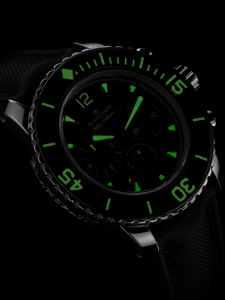
A Luminous Dial Is Easy To Read And Doesn’t Need To Be Turned On
Battery or Mechanical
This is another one of those categories when digital can only do one, but analogue can do both. Digital watches require batteries, which means you must replace them from time to time – this isn’t a big problem being as most digital watches will run for many years on one battery. However, some people (including myself) prefer not to have to worry about finite power sources – so I like to use kinetic watches, i.e. watches that wind themselves by the movement of your wrist. It means that you don’t need to consider ever going to a jewelers about your watch battery again. The other upside to kinetic watches is that they are completely sealed environments – there is no back to take off to replace the battery, which makes it more watertight.
The problem with an automatic watch (another name for the self-winding mechanism) is that if you don’t wear it for a week or two, then you’ll need to reset the time and date, and maybe give it a big of a shake to get it working again. I have two watches that I like to alternate between, both of them are kinetic so I need to reset them every time I switch, this really bugs me because I also have an old Casio digital watch that has been left in a drawer for four years and still keeps great time. The lesson here is that sometimes simple and low tech works out better than over engineered and pricey.
Closing Statement
Whether you are looking at buying a dive watch as a working tool, a dive fashion statement or as a dive computer, you will certainly have almost endless choice. To help narrow your choices down, I will follow up on this article with a list of eight excellent aquatic timepieces that are all fantastic in their own way.
Do you have a favorite dive watch? Ever heard any wild tales of chronometric extravagance or heartbreaking yarns about loosing a loved timepiece? Whatever your feelings on dive watches, please let us know by leaving a comment below.